3.8 Creating a Virtual Machine
As you create the virtual machine by using the vSphere Client, many settings will use the default value. Ensure that you use the following recommended settings:
-
For the iSCSI controller, use LSI Logic SAS (the default controller type for SUSE Linux Enterprise Server 11 64-bit).
NOTE:VMware Paravirtual SCSI controllers cannot be used in clustering environments because they use caches to achieve better throughput.
-
Add virtual NICs if needed.
You can specify whatever NIC type you need based on your hardware, network needs, and other considerations for your environment.
For example, E1000 and VMXNET3 NIC types have drivers in the Linux kernel and do not require VMware Tools to be installed in order to run. This allows these NICs to be available during the operating system installation.
-
Edit the VM settings before you complete the virtual machine creation.
-
Add the shared storage.
-
Change the MAC address setting to Manual.
-
Remove unwanted hardware, such as the floppy disk.
-
Add dedicated NICs.
-
Ensure that you meet the prerequisites for creating virtual machines, as described in Start the Virtual Machine Creation Process in the vSphere Client
in the VMware vSphere 5 Documentation Center.
-
Launch the vSphere Client.
-
In the vSphere Client, display the inventory objects in the vSphere Client by using the VM and Templates view.
-
Right-click an object and select New > Virtual Machine.
-
On the Configuration page, select Custom, then click Next.
Figure 3-12 Create New VM: Configuration - Custom
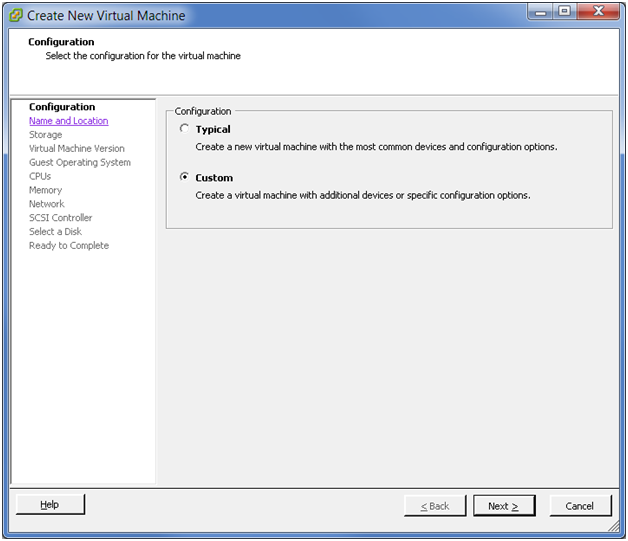
-
On the Name and Location page, select a name and location for the virtual machine, then click Next.
The name you enter is used as the virtual machine’s base name in the inventory and for the name of the virtual machine’s files. The name must be unique on the host server. Names are case insensitive and can be up to 80 characters long.
Figure 3-13 Create New VM: Name and Location
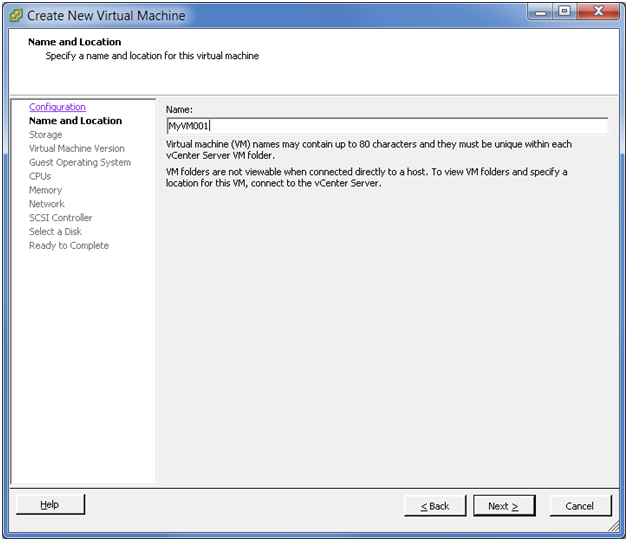
-
On the Storage page, select a destination datastore for the virtual machine files, then click Next.
For this example, select datastore1.
Figure 3-14 Create New VM: Storage
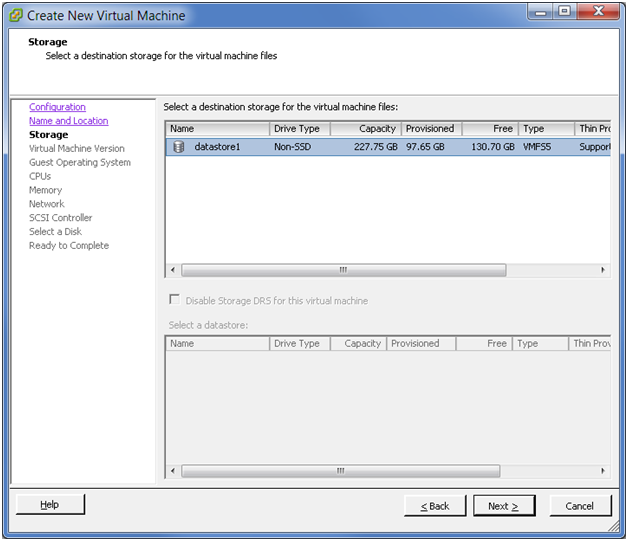
-
On the Virtual Machine Version page, specify the compatibility version desired for the virtual machine image, then click Next.
If the host supports more than one VMware virtual machine version, you can select a version for the virtual machine.
Figure 3-15 Create New VM: VM Version
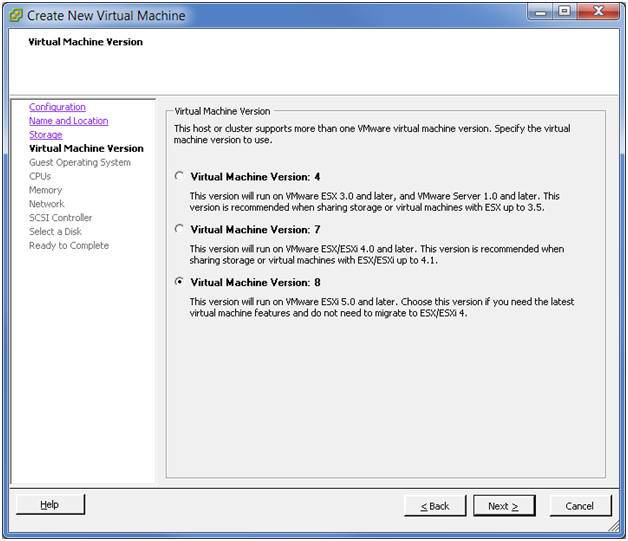
-
Specify the guest operating system and version to use with this virtual machine, then click Next.
For the OES Server, select Linux as the Guest Operating System, then select SUSE Linux Enterprise Server 11 64-bit from the Version drop-down list.
Figure 3-16 Create New VM: Guest Operating System
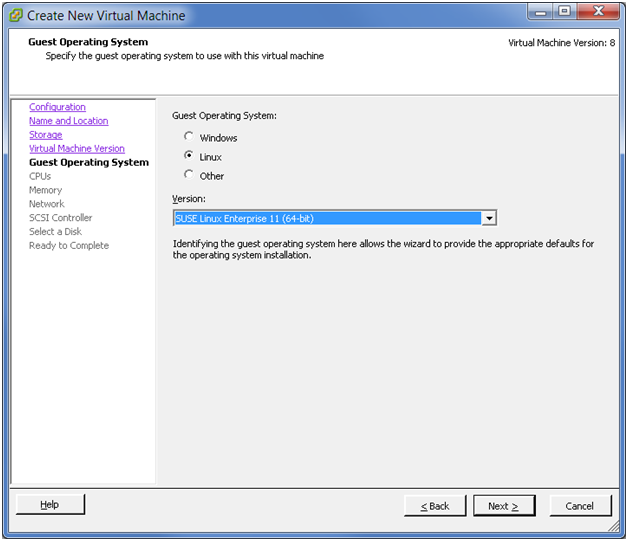
-
On the CPUs page, select the number of virtual sockets for the virtual machine, select the number of cores per virtual socket, then click Next.
The total number of cores is the number of cores per socket multiplied by the number of virtual sockets. The resulting total number of cores should be a number equal to or less than the number of logical CPUs on the host.
Figure 3-17 Create New VM: CPUs
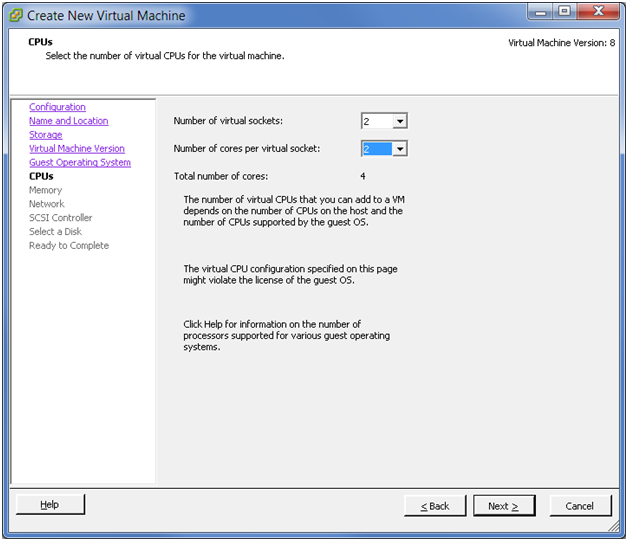
-
On the Memory page, specify the amount of memory that the guest operating system can use, then click Next.
The minimum memory size is based on the type of firmware used by the virtual machine:
-
BIOS firmware: 4 MB
-
EFI firmware: 96 MB
The maximum memory size for a virtual machine depends on the host’s physical memory and the virtual machine’s hardware version. The size must be a multiple of 4 MB.
Figure 3-18 Create New VM: Memory
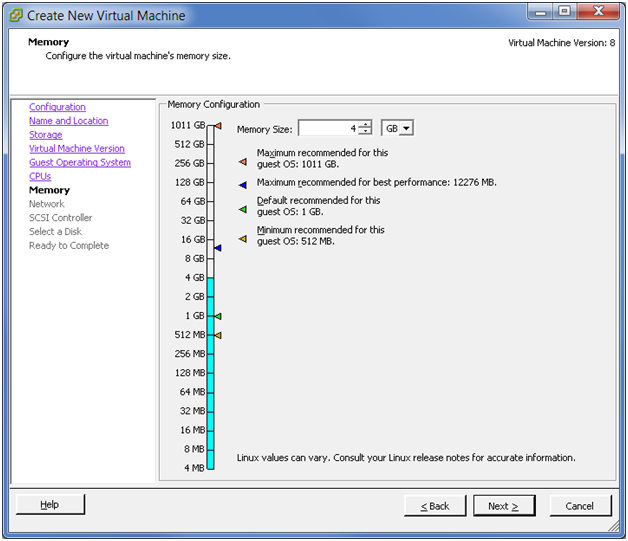
-
-
On the Network page, specify 2 as the number of virtual NICs to connect, specify the following values for each NIC, then click Next.
NIC
Network
NIC
Connect at Power On
NIC1
VM Public
E1000
(or as appropriate)
Selected
NIC2
VM Private
E1000
(or as appropriate)
Selected
For the public IP address, you can use any static public IPv4 address that is available to your company.
In VMware, a private NIC is a virtual NIC connected to virtual switch that is on a private network. You can have as many private NICs as the VMware host can handle. You can use any available private IP address to bond to the private NIC. For IPv4, the private IP addresses are 10.0.0.0 to 10.255.255.255, 172.16.0.0 to 172.31.255.255, and 192.168.0.0 to 192.168.255.255.
IMPORTANT:NCS does not require private NICs or private networks, whether you are using virtual or physical environments.
There are perceived advantages and disadvantages for using private NICs. With private NICs, your NCS inter-node traffic can be kept internal and separate from data access traffic, which keeps it more secure and provides separate bandwidth. However, the separation could create a scenario where NCS traffic moves smoothly while data access traffic is down. Some administrators prefer to deliberately combine NCS and client traffic together to avoid this kind of problem.
Figure 3-19 Create New VM: Network
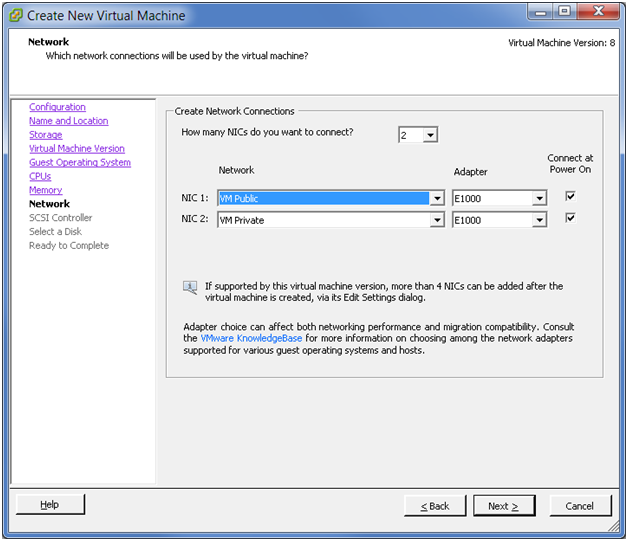
-
On the SCSI Controller page, select the SCSI controller type as LSI Logic SAS (the default for SLES 11 64-bit), then click Next.
The wizard preselects the correct default controller based on the guest operation system you selected on the Guest Operating System page.
Figure 3-20 Create New VM: SCSI Controller
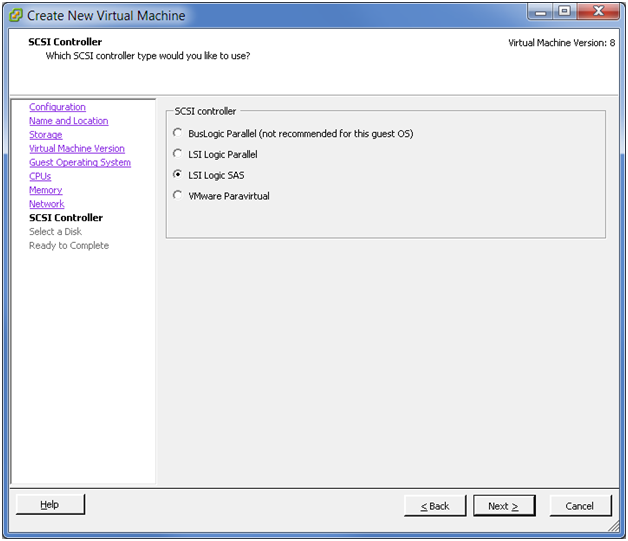
-
On the Select a Disk page, select Create a new virtual disk as the virtual disk type to use for the system device, then click Next.
Figure 3-21 Create New VM: Disk
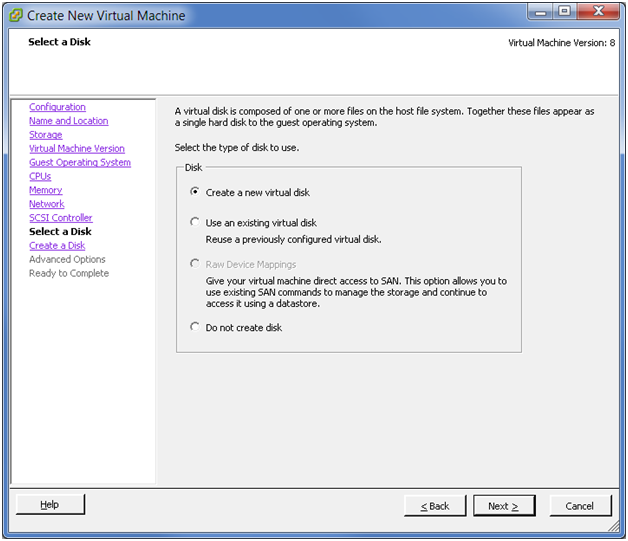
-
On the Create a Disk page, specify the following information for the virtual disk, then click Next.
-
Disk Size: Specify the amount of space to use for the system device. For example, 40 GB.
-
Disk Provisioning: Select Thick Provision Lazy Zero.
The specified disk space for the virtual disk is allocated at create time. Any data remaining on the physical device is zeroed out on demand at a later time on first write from the virtual machine.
-
Disk Location: Select Store with the virtual machine.
Figure 3-22 Create New VM: Create a Disk
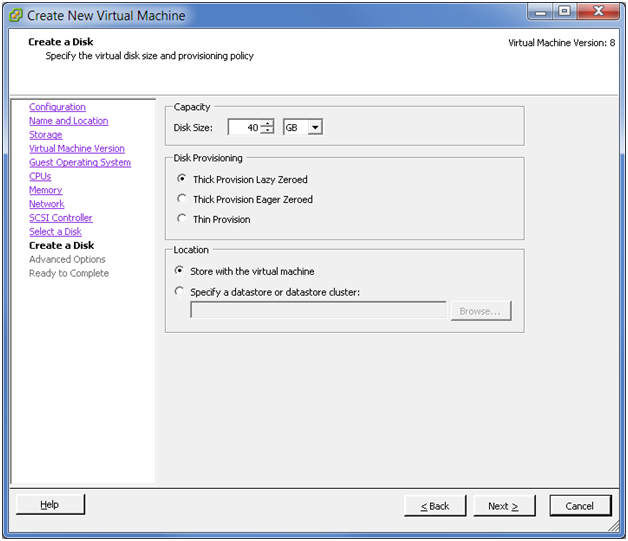
-
-
On the Advanced Options page, specify the advanced options to use for the virtual disk, then click Next.
-
Virtual Device Node: Select SCSI (0:0) from the drop-down box.
-
Mode: Deselect the Independent check box.
Figure 3-23 Step 15 (Advanced Options)
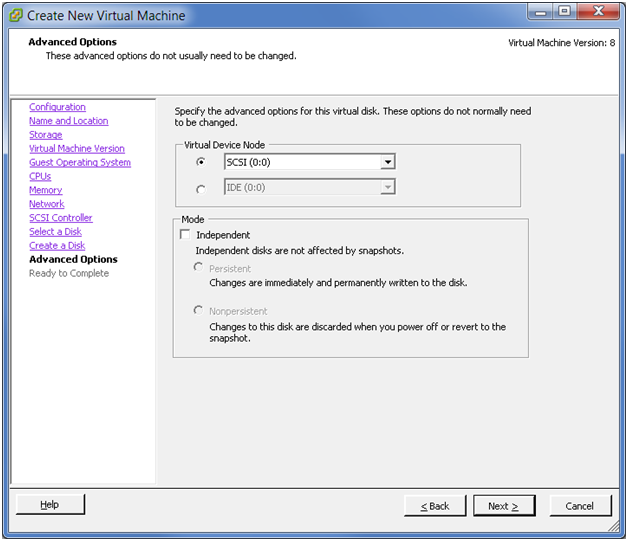
-
-
On the Ready to Complete page, review the configuration settings, select Edit the virtual machine settings before completion, then click Continue.
Figure 3-24 Create New VM: Ready to Complete
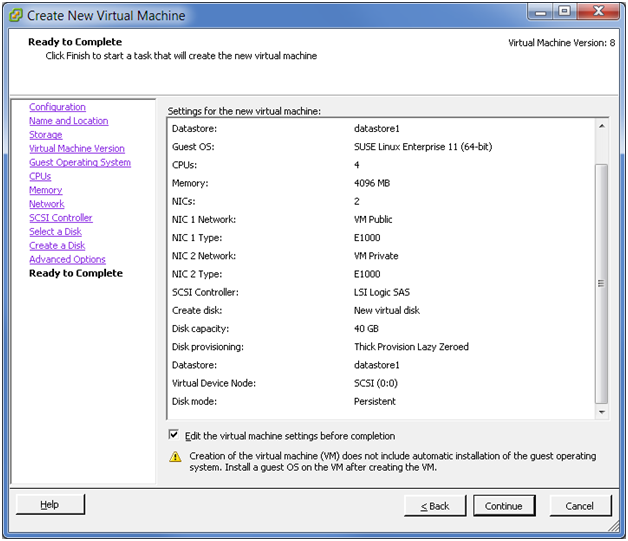
-
On the Hardware tab of the Virtual Machine Properties page, review the hardware properties and edit the VM settings before you complete the virtual machine creation.
The procedures in this step describe how to modify the following settings:
-
Add the shared storage.
-
Add a CD/ROM device if you are installing from the host CDROM device or from an ISO file.
-
Remove unwanted hardware, such as the floppy disk.
-
Set the BIOS screen to appear on the next reboot.
-
Change the MAC address setting to Manual and use static MAC addresses.
-
Add dedicated NICs.
Figure 3-25 Create New VM: VM Properties
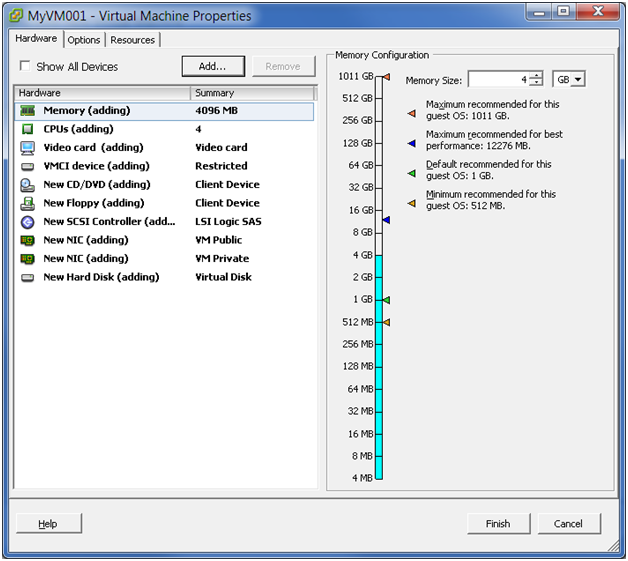
-
Add the shared storage that you created and mapped in Section 3.7, Preparing Shared Storage.
Repeat the following procedure for each shared hard disk that you want to add to this virtual machine:
-
On the Hardware tab, click Add, select Hard Disk as the Device Type, then click Next.
You can also select New Hard Disk, then click Add.
Figure 3-26 Add Hardware: Add> Device Type > Hard Disk
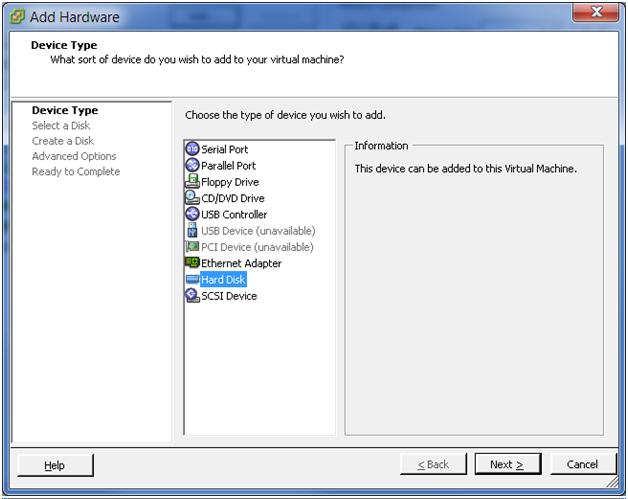
-
On the Select a Disk page, select Use an existing virtual disk, then click Next.
Figure 3-27 Add Hardware: Select a Disk
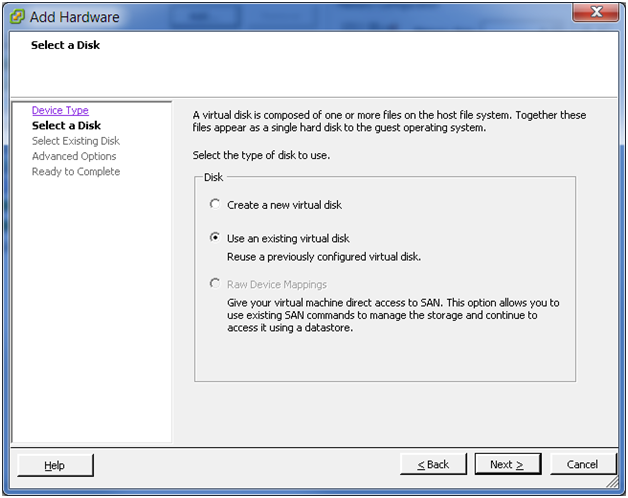
-
On the Select Existing Disk page, click Browse. In the pop-up browser, locate the datastore, select the disk you want to add from the datastore, then click OK. On the Select Existing Disk page, click Next.
As a best practice for consistency, add the SBD disks first, then add the data disks. For the first hard disk you add, select one of the disks you prepared for use as an SBD. For the second hard disk you add, select the second disk that you prepared for the SBD. Thereafter, you can add data disks in your preferred order.
Figure 3-28 Add Hardware: Select Existing Disk
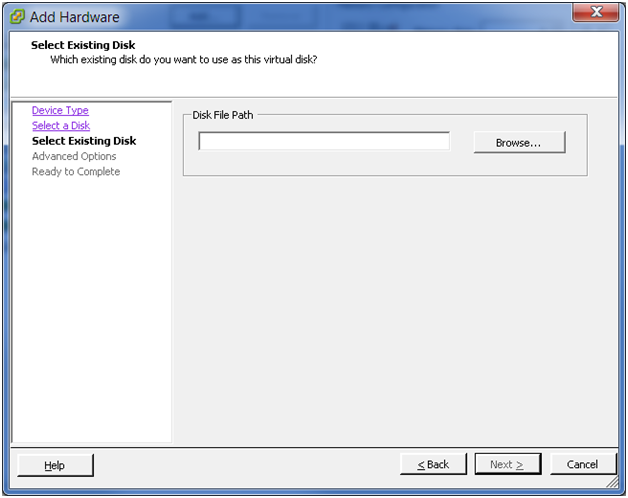
Figure 3-29 Add Hardware: Browse Datastores
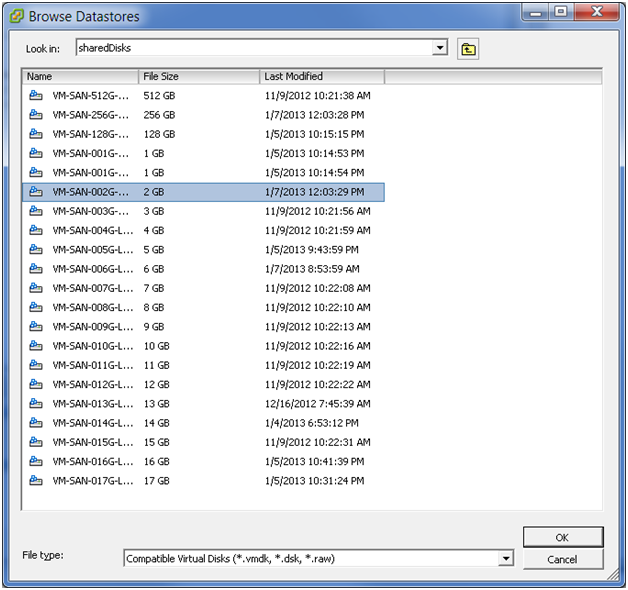
-
On the Advanced Options page, specify the following values, then click Next.
-
Virtual Device Node: Select SCSI (1:0) (or the default node value offered as appropriate if you have added multiple disks) from the drop-down box.
-
Mode: Select the Independent check box, then select Persistent.
Disks in persistent mode behave like conventional disks on your physical computer. All data written to a disk in persistent mode are written permanently to the disk.
Figure 3-30 Add Hardware: Advanced Options for the Existing Disk
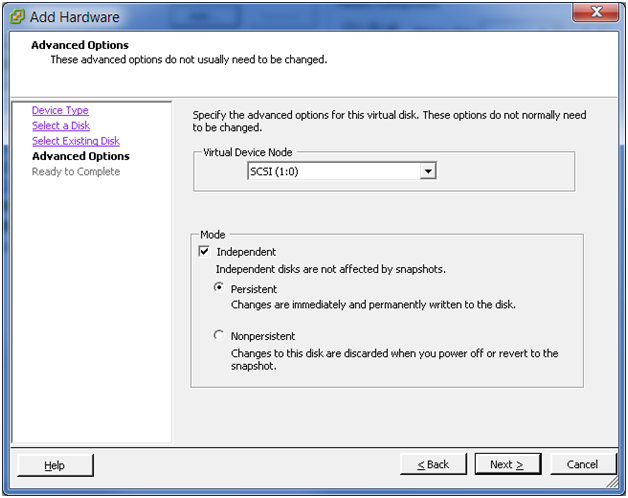
-
-
On the Ready to Complete page, review the selected options, then click Finish.
Figure 3-31 Add Hardware: Ready to Complete Add Existing Hard Disk

-
Repeat the previous steps for each shared hard disk that you want to add.
-
-
On the Hardware tab of the Virtual Machine Properties page, add a CD/DVD device, then set its properties.
-
Device Status: Select the Connect at power on check box.
-
Device Type: Use one of the following resources:
If you are installing from a DVD, select Host device, then select the path of the device from the drop-down list. In the Figure 3-32 example, the path is /vmfs/devices/cdrom/mpx.vmhba0:C0:T0:L0.
If you are installing from a DVD ISO file, select Datastore ISO file, then browse to locate and select the file.
-
Virtual Device Node: Select the device node from the drop-down list, such as IDE (1:0).
Figure 3-32 Create New VM: CD/DVD Disk Properties
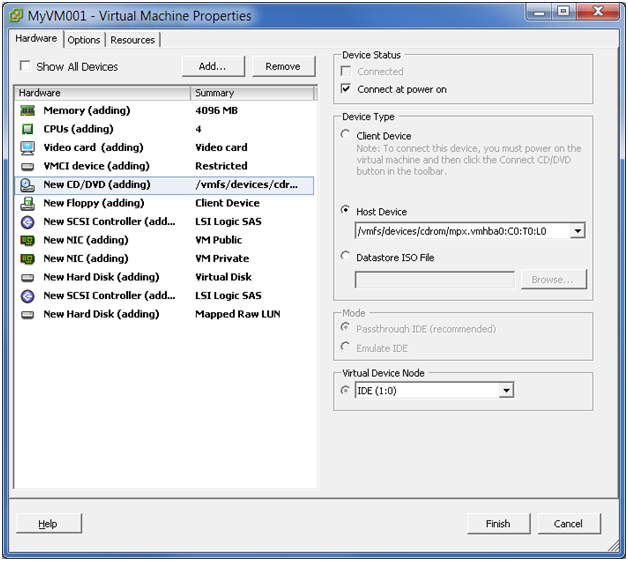
-
-
On the Hardware tab of the Virtual Machine Properties page, remove unwanted hardware, such as the floppy disk. Select the object, then click Remove.
-
On the Options tab of the Virtual Machine Properties page, review the settings. If you need to set the BIOS for the virtual machine, select the Force BIOS Setup check box.
The next time the virtual machine boots, it is forced into the BIOS setup screen.
Figure 3-33 Create New VM: Options > Boot Options
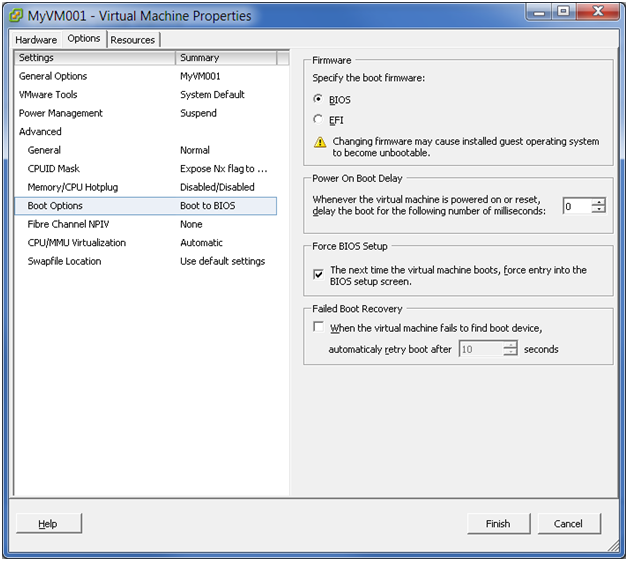
-
On the Hardware tab of the Virtual Machine Properties page, select the VM Private NIC, change the MAC Address setting to Manual, then type the static MAC address.
Figure 3-34 Create New VM: Hardware > NIC > Manual MAC Address
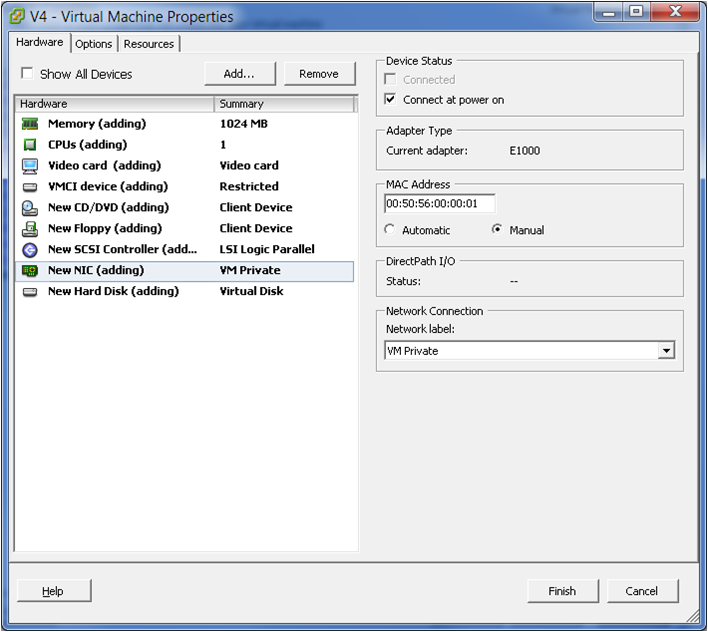
-
On the Hardware tab of the Virtual Machine Properties page, add dedicated NICs.
-
On the Hardware tab, click Add.
-
On the Add Hardware page, click PCI Device.
Figure 3-35 Add Hardware: Choose PCI Device
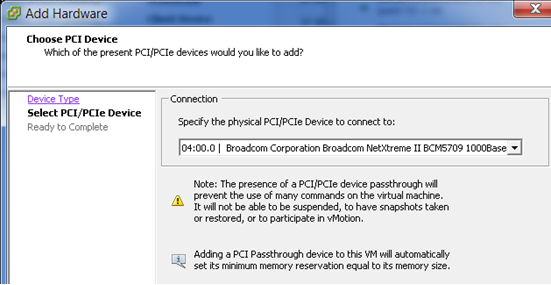
-
On the Chose PCI Device page, specify the physical NIC to use for the NIC.
-
Click Next.
-
-
Click Finish.
-
-
In the vSphere client, select Host > Virtual Machines, then verify that the newly created virtual machine appears in the VM list of the vSphere client.
Figure 3-36 VM List in the VSphere Client
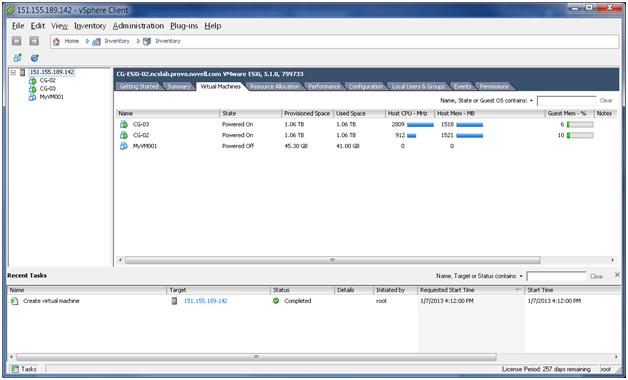
-
(Optional) View a list of the files created for the virtual machine. In a terminal console, go to the location that you specified for the virtual machine, then enter
ls -l
For example:
#1 root@CG-ESXi-02:/vmfs/volumes/509d3948-7ed53294-d0b3-984be1751d14/CG-02 # ls -l -rw------- 1 root root 0 Nov 27 21:54 CG-02-8ddbb415.vswp -rw------- 1 root root 42949672960 Nov 27 22:37 CG-02-flat.vmdk -rw-r--r-- 1 root root 8684 Nov 27 22:34 CG-02.nvram -rw------- 1 root root 466 Nov 27 21:55 CG-02.vmdk -rw-r--r-- 1 root root 0 Nov 9 19:21 CG-02.vmsd -rw-r--r-- 1 root root 6862 Nov 27 21:54 CG-02.vmx -rw------- 1 root root 0 Nov 9 19:21 CG-02.vmx.lck -rw-r--r-- 1 root root 256 Nov 9 19:21 CG-02.vmxf -rw-r--r-- 1 root root 6862 Nov 27 21:54 CG-02.vmx~ -rw-r--r-- 1 root root 2662757 Nov 27 22:04 vmware.log -rw------- 1 root root 8566144 Nov 9 19:21 vmx-CG-02-2379985941-1.vswp